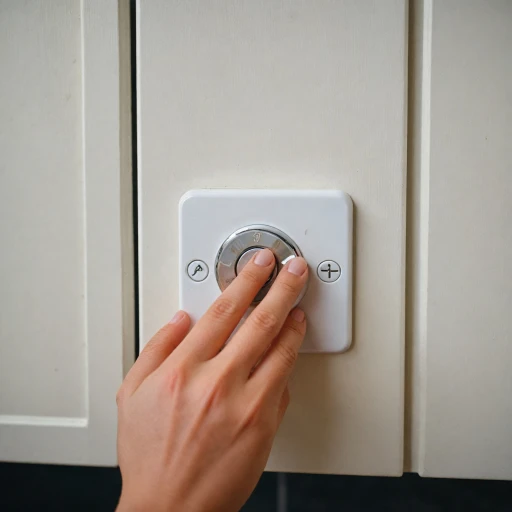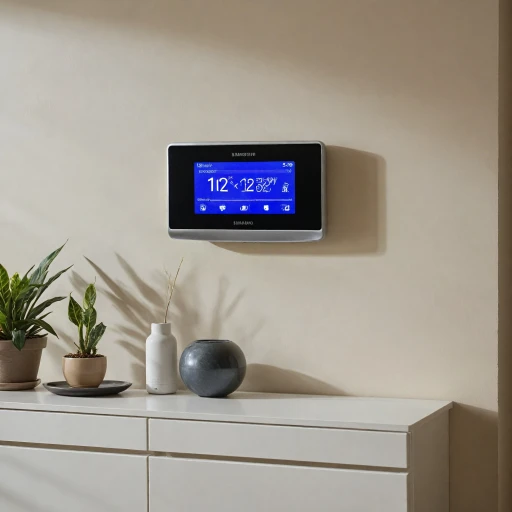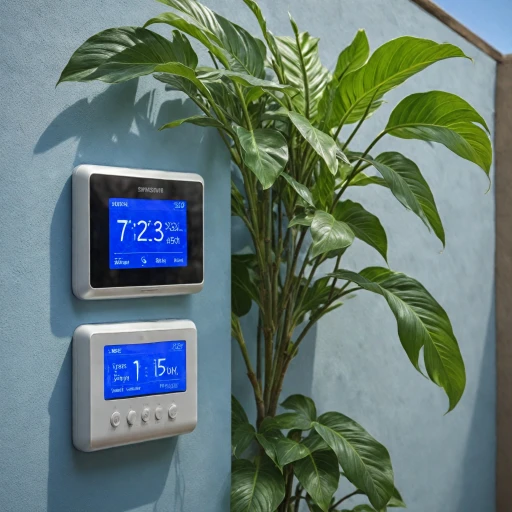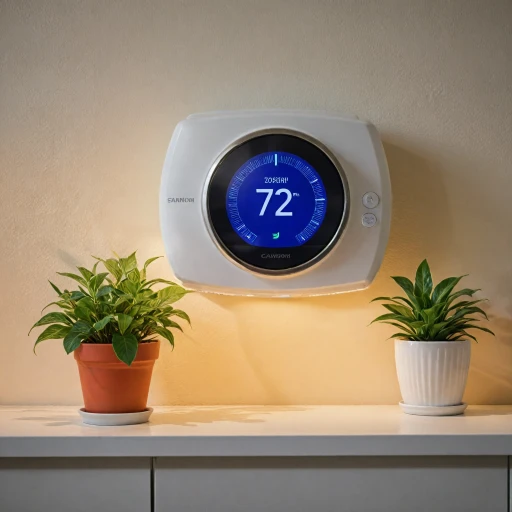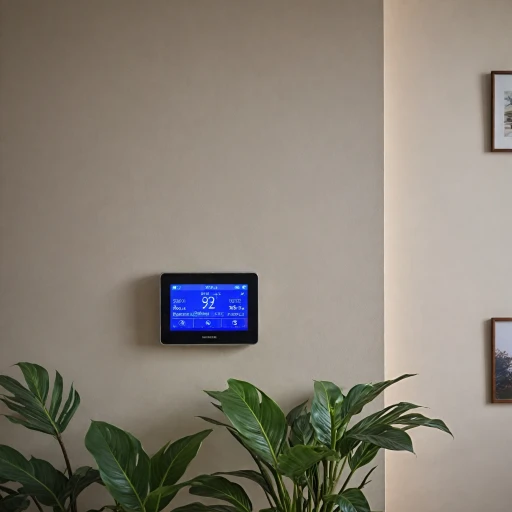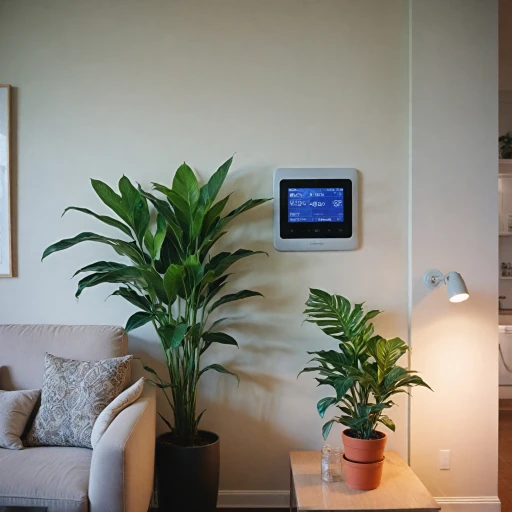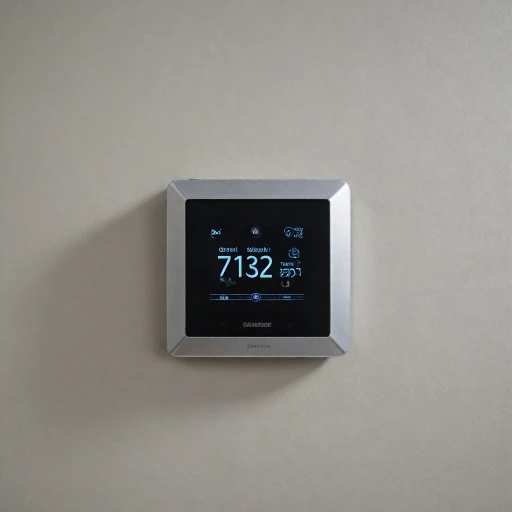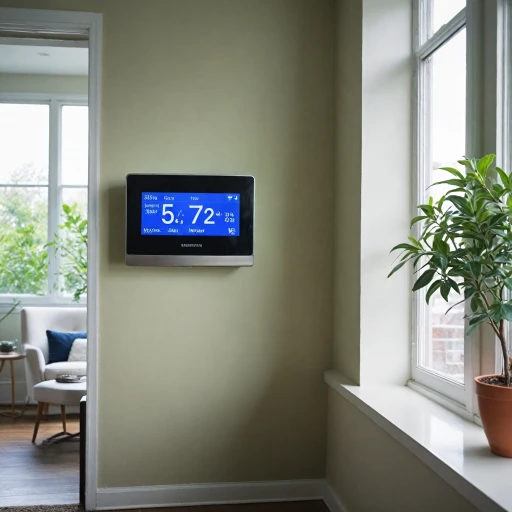Understanding Smart Thermostats
Exploring the Basics of Smart Thermostats
Smart thermostats have become a cornerstone in modern home automation, offering a blend of convenience, efficiency, and control. These devices are designed to optimize your home's heating and cooling systems by learning your schedule and preferences, ultimately helping you save on energy bills. A smart thermostat can be a game-changer for those looking to enhance their home's energy efficiency and comfort.
One of the standout features of smart thermostats is their ability to integrate with other smart home devices, such as motion sensors. This integration allows for a more dynamic and responsive home environment. For instance, when a motion sensor detects movement, it can trigger the thermostat to adjust the temperature accordingly, ensuring comfort when you're home and energy savings when you're not.
Many smart thermostats are compatible with popular home assistants like Amazon Alexa, allowing for voice control and easy adjustments. This compatibility extends to various smart home protocols, including Zigbee and Z-Wave, ensuring that your thermostat can communicate with other devices in your home.
When choosing a smart thermostat, consider factors such as price, ease of installation, and compatibility with your existing smart home hub. Verified purchase reviews can provide valuable feedback from other users, helping you make an informed decision. Additionally, look for features like battery backup and a reset button for added convenience and reliability.
As we delve deeper into the role of motion sensors in home automation, you'll see how these devices can further enhance the functionality of your smart thermostat, creating a seamless and energy-efficient home environment.
The Role of Motion Sensors in Home Automation
The Intersection of Motion Sensors and Home Automation
In the realm of home automation, motion sensors play a pivotal role in enhancing both security and convenience. These devices are not just about detecting movement; they are about creating a seamless and intelligent environment that responds to your presence and activities. By integrating motion sensors with other smart devices, such as thermostats, lights, and security systems, homeowners can achieve a higher level of automation and efficiency.
Motion sensors come in various forms and technologies, including infrared, ultrasonic, and microwave. Each type has its strengths, such as long-range detection or the ability to detect motion through obstacles. When a sensor detects motion, it can trigger a series of actions, such as turning on lights or adjusting the thermostat to a more comfortable setting. This capability is not only convenient but also energy-efficient, as it ensures that devices are only active when needed.
For those looking to enhance their smart home setup, motion sensors can be integrated with platforms like Amazon Alexa or Google Home Assistant. These integrations allow for voice-activated controls and more complex automation routines. For instance, when a motion detector senses movement in the living room, it can trigger a smart thermostat to adjust the temperature or a smart hub to turn on the lights.
Battery life is a crucial consideration for motion sensors, especially for those installed in hard-to-reach places. Many sensors offer extended battery life, reducing the need for frequent replacements. Additionally, some models come with a reset button, allowing for easy troubleshooting and maintenance.
When selecting motion sensors, it's essential to consider factors like the range of detection, compatibility with other smart devices, and user feedback. Verified purchases and reviews can provide insights into the performance and reliability of these items. Whether you're looking to enhance home security or improve energy efficiency, motion sensors are a valuable addition to any smart home ecosystem.
Integrating Motion Sensors with Smart Thermostats
Integrating Motion Detectors with Thermostat Systems
When it comes to blending smart technology seamlessly into our daily lives, integrating smart thermostats with motion detectors can bring significant benefits. By connecting these devices, home automation systems can become more responsive, efficient, and convenient. But how exactly does this integration work in practice?
Motion sensors function as the vigilant eyes of your smart home, detecting even the smallest movements. By doing so, they can provide trigger motion signals to your smart thermostat, which can then adjust the temperature based on occupancy and activity. This combination not only enhances comfort but also optimizes energy use elegantly.
For example, when a motion sensor detects activity in a room, the thermostat will adjust its settings to ensure the space is heated or cooled as required. Conversely, if the sensors detect no movement for an extended period, the system can decide to conserve energy by altering the temperature settings. This integration means your home is not only reacting to occupancy but is also doing so in a time-efficient manner.
The current market offers a variety of motion sensors, including those compatible with hubs like Zigbee or smart devices from platforms such as Amazon. These sensors typically come with versatile features, such as being battery operated or having a reset button for easy maintenance and verified performance. By choosing suitable sensors, homeowners can set up motion-triggered temperature adjustments that work seamlessly with their smart thermostats, enhancing their home automation experience.
If you’re considering pursuing this home upgrade, feedback from those with verified purchase experiences can be invaluable. Verified reviews can provide insights into the long-range detection capabilities of sensors or the reliability of particular brands. Such information can help you make an informed decision, ensuring the right devices are chosen to meet specific home or outdoor motion sensing needs.
Optimizing Energy Efficiency with Motion Sensors
Achieving Energy Savings with Sensor Technology
Home automation has revolutionized energy management, with smart thermostats at the forefront of this innovation. Integrating motion sensors with these devices optimizes energy efficiency by tailoring your home's heating and cooling based on real-time occupancy. When motion is detected, the system can intelligently adjust temperature settings. For instance:- Triggering adjustments: If a motion detector identifies movement in a room, the heating or cooling system can activate or adjust to maintain a comfortable environment, ensuring energy isn't wasted in unoccupied areas.
- Time-based responses: By setting specific times when motion must be detected to warrant temperature changes, your smart thermostat can effectively manage energy use across different periods of the day.
- Feedback and learning: Many systems allow for feedback collection from users, which helps refine their algorithms. Verified feedback from users on platforms like Amazon often mentions the importance of a system that learns and predicts the best times to adjust settings based on motion patterns.
Compatibility and Connectivity
To harness these benefits, it’s vital that your smart thermostat is compatible with various smart home devices and networks, such as those using Zigbee or Z-Wave protocols. This ensures seamless interactions between motion detectors, sensors, and the hub managing your smart home devices. Additionally, many smart thermostats are designed to integrate with voice-activated home assistants, enhancing user control. For example, you can ask your home assistant to "turn light on when motion is detected." Connectivity aspects like these simplify user interactions and underscore the role of smart devices in enhancing home automation efficiency.Beyond Basic Adjustments
The power of motion sensors extends the capabilities of smart thermostats beyond traditional programming. They offer:- Advanced automation: With the capability to detect motion and outdoor conditions, sensors provide nuanced data that allow for more than just heating and cooling adjustments – contributing to broader energy management strategies.
- Long-range capabilities: Some sensors offer long-range detection, ensuring wide coverage and comprehensive energy optimization throughout the home.
- Peace of mind: Integrating motion sensors into your smart home setup boosts home security. These sensors can function as an additional layer of security, ready to alert you to unexpected movement detected at any time.
Enhancing Comfort and Convenience
Enhancing Comfort and Convenience in Your Smart Home
Smart thermostats, enriched with motion sensors, help streamline the way we interact with our living spaces by transforming daily routines into seamlessly automated processes. By detecting motion, these sensors can adjust the temperature settings to ensure optimal comfort throughout different areas of the home. Integrating motion sensors into your home automation system elevates convenience. When sensors detect motion in a room, they communicate with the smart thermostat to adjust the temperature, enhancing comfort almost instantly. This automation minimizes the need to manually adjust settings, ensuring your home remains at your preferred comfort level without requiring constant monitoring. The interplay between motion sensors and smart thermostats can also be coordinated with lighting systems. When detecting motion, not only does the system adjust the thermostat, but it can also trigger motion-activated lighting, turning lights on and off to create a welcoming ambiance while managing energy use efficiently. Moreover, these smart devices often work with various platforms, such as home assistant hubs. Verified purchases from platforms like Amazon often highlight the long-range capabilities and responsive features, showcasing the capabilities of these systems as reliable components of your smart home setup. Additionally, smart thermostats—with integrated motion detectors—can adapt to the time of day and activity patterns recorded over time. This means that whether you're arriving home early or hosting guests, the system uses historical and real-time data to anticipate and adjust settings. It enhances both the convenience and adaptive nature of a smart home environment, delivering an enriched living experience.Future Trends in Smart Home Technology
Future Prospects in Smart Home Integration
The landscape of smart home technology continues to evolve, introducing promising innovations for homeowners and tech enthusiasts alike. The integration of motion sensors and smart thermostats is rapidly advancing, with potential enhancements on the horizon.
One significant trend is the growing compatibility with broader ecosystems. Devices like Amazon's home assistant already facilitate seamless interactions among various smart devices, including thermostats and motion detectors. As technology advances, we can expect even more refined connectivity across devices, improving responsiveness and user experience.
Sensors detecting motion across long-range areas are likely to see improvements, with advancements in battery life promising extended operational time without frequent replacements. Motion detectors powered by the Zigbee protocol or similar are ideal for optimizing sensor home networks, ensuring efficient energy consumption by triggering motion-based actions only when necessary.
Moreover, the rise of home security systems that incorporate outdoor motion detectors continues to be a priority. These devices improve safety and monitor movement detected around the home, adding a crucial layer to property protection. Whether it's turning lights on with motion detected or integrating within a central hub that controls all devices, the adaptability of smart technology is set to enhance significantly.
As the sector continues to expand, verified purchase feedback from users will drive innovation by guiding manufacturers to develop products that fulfill the actual needs of consumers. While prices for these advanced systems can vary, competitive pricing and verified shipping processes assure consumers of robust and reliable products.
Smart home integration is undoubtedly headed towards a future where energy efficiency and convenience align seamlessly. With the evolution of wave motion technology and more sophisticated reset button features, these smart solutions will not only drive down costs but also champion a sustainable and effortless way of living.


